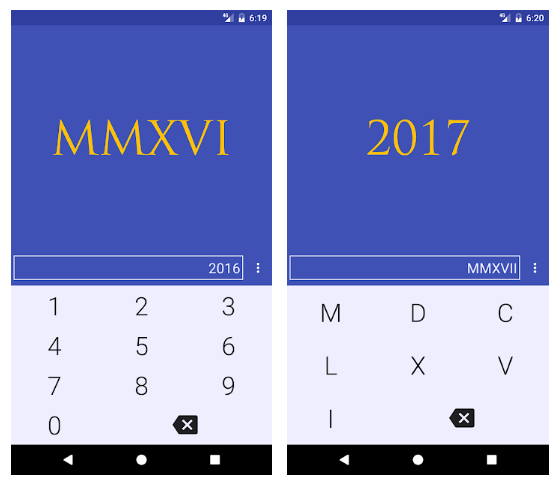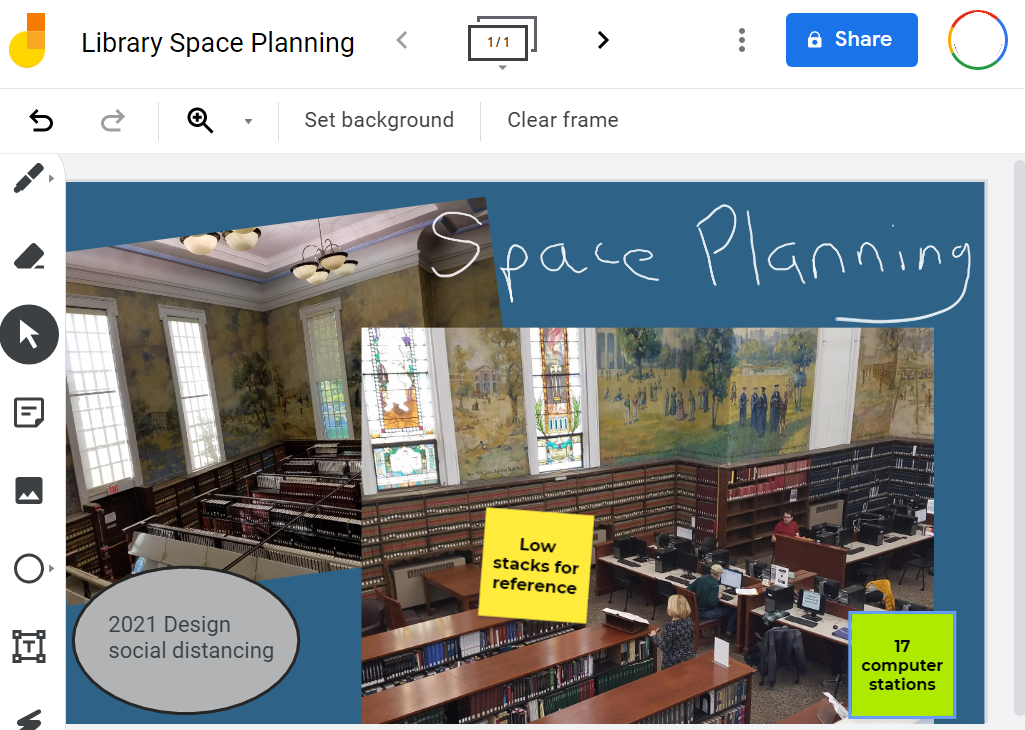By Lauren Puzier

(5-minute read)
Tech tools is a topic we like to revisit again and again because technology is continuously changing and there are always new tools and apps to test out. There are tools for everything from productivity, audio, communication, content creation and design, coding, automation, VR, video, etc. The NMRT Online Discussion Committee asked members what tools they have found useful in their work, at their library, or at home over the past year. Members shared tools they were interested in trying and which apps helped their daily workflow.

When it comes to productivity, PomoDone App helps get jobs done. “It is a little timer that uses the Pomodoro Time Management Method.” This is a method where you work for a set period, such as 20 minutes, and then take a 5-minute break. “You can customize it with sounds, and it can also be used to track tasks and time spent on specific projects/documents. It helps me stay on task.” (Puzier, 2021). Add it as a browser extension to quickly set the timer when you start working on a project.
Slack and Twist also made our list as beneficial for enhancing productivity. Twist is a collaboration tool for the workplace. It combines instant messaging, emails, and more into a clean workspace. It’s “great for organizing team communications and reducing the number of emails that I have to look at.” (Weingardt, 2021). Similarly, Slack is a collaboration tool that allows for easy messaging, the creation of channels (specific groups of people), and endless integrations. Slack features the ability to collaborate across institutions, allowing multiple synchronous conversations in one space. (Johnson, 2018, p. 148).
The rapid shift to working remotely over the past year may have increased emails resulting in unmanageable inboxes. McMurtry defined email overload as “the feeling of being overwhelmed by the constant flow of messages appearing in the inbox and the inability to manage the high volume of messages effectively” (2014, p. 31). If the volume of email in your inbox becomes overwhelming, our members found Unroll.me extremely useful. This app helps to streamline emails making it simple to flip through emails and organize them. “You can quickly unsubscribe from any subscription emails or choose to “rollup” emails that you’d like to read all together as a digest” (Birkenhauer, 2021). The popular service has just released an app making it even more convenient to declutter and manage emails.
A few members noted that a tool they plan to experiment with more: Google Jamboard. Google released Jamboard in 2017, and even if you do not have access to the official 55-inch screen, 4k, collaborative whiteboard, you can still create jamboards online with Google Suite (Sheppard, 2017, p. 80). Jamboard is an interactive whiteboard tool with several features allowing you to quickly pull images from the web, draw, add sticky notes, highlight, and more. It is ideal for brainstorming with others. This may be a good tool for those who are using G Suite already.
If you are using Google Slides, PowerPoint, teaching, or engaging with patrons, check out Pear Deck. “As an educator, I have been using Pear Deck to make my Google Slides presentations more interactive by adding questions. This has been particularly useful for remote teaching” (Weingardt, 2021). Pear Deck enhances Google Slides with formative assessments and interactive questions. Pear Deck can prompt your viewers to answer questions as you flip through a slide deck. It has been found to successfully create interactive asynchronous learning experiences for students working at their own pace and even for in-person sessions (Fulfer, 2020).
Tech tools are also helping catalogers. One member noted that Google Translate and Translate Box (iOS or Android) are fantastic tools when you need to do a quick translation. “I deal with a great deal of non-English materials, so I have to find ways to translate them, I can only read English. There are a few translator apps that I like to use. These have a camera function so you can take a picture of the book and it will translate the picture” (Dubose, 2021). Members agreed on the value of the Google Translate app, noting “Is this app perfect? No, but it often gives me just enough bibliographical information to do my job” (Cull, 2021).
Further recommendations included the Roman Numeral Converter. “I often forget my Roman numerals, and older rare books tend to use Roman numerals for publishing dates. I started using the Roman Numeral Converter. It is so handy” (Cull, 2021). Cataloging Calculator was also recommended. This tool helps catalogers figure out author cutters when creating call numbers.

Airtable is a tool that was praised for project management not only at work but also at home. It is a cloud service described as a spread-sheet database hybrid lending itself to all types of projects and tasks. Airtable has many project templates so that you don’t have to start from scratch. One member shared that “For work (special library), we have a paid account. We use it as a digital repository for images, to keep track of events, scheduling, and organizing conferences. For my personal life, I use a free account to keep track of the courses I’ve taken and those I still need to take. I have a base where I input all the movies, tv shows, and books I’ve watched and read. I’ve also used it for calculating hours spent doing freelance work” (Darling, 2020).
Other noteworthy tools included:
- Loom: a browser-based screen capture program.
- Asana: a project management tool
- Padlet: a digital note-board
- Flipgrid: an accessible video discussion tool
- Canva: an image editing and design
- TeamViewer: provides remote desktop access
Finally, a well-curated list of tech tools and apps called E-learning by Traci Parish was shared, “the author also accepts suggestions and comments for sites (including ones I have sent to her). I’ve tried (and continue to try) many of the things found here” (Rebar, 2020). The list is sorted by type making it easy to scan and discover new things. Categories include screen capture, authoring tools, image editors, and more. If you have any tech tools that have been helpful that were not mentioned here please leave a comment and let us know what has been working and what you would like to try.
References
Birkenhauer, L. (2021, January 6). Re: [NMRT-L] Still time to jump in- December Discussion Topic: Tech Tools and Apps [Electronic mailing list]. https://lists.ala.org/sympa/arc/nmrt-l/2021-01/msg00004.html
Cull, K. (2021, January 6). Re: [NMRT-L] Still time to jump in- December Discussion Topic: Tech Tools and Apps [Electronic mailing list]. https://lists.ala.org/sympa/arc/nmrt-l/2021-01/msg00006.html
Darling, V. (2020, December 6). Re: [NMRT-L] December Discussion Topic: Tech Tools and Apps [Electronic mailing list]. https://lists.ala.org/sympa/arc/nmrt-l/2020-12/msg00007.html
Dubose, J. (2021, January 6). Re: [NMRT-L] Still time to jump in- December Discussion Topic: Tech Tools and Apps [Electronic mailing list]. https://lists.ala.org/sympa/arc/nmrt-l/2021-01/msg00005.html
Fulfer, W. (2020). StayCentred: Maintaining Personal Education at Centre College During COVID-19. Journal of Chemical Education, 97(9), 2783–2787. https://doi.org/10.1021/acs.jchemed.0c00726
Johnson, H. (2018). Slack. Journal of the Medical Library Association, 106(1), 148–151. https://doi.org/10.5195/JMLA.2018.315
McMurtry, K. (2014). Managing Email Overload in the Workplace. Performance Improvement, 53(7), 31-37. https://doi.org/10.1002/pfi.21424
Puzier, L. (2021, January 6). Re: [NMRT-L] Still time to jump in- December Discussion Topic: Tech Tools and Apps [Electronic mailing list]. https://lists.ala.org/sympa/arc/nmrt-l/2021-01/msg00003.htm
Rebar, L. C. (2020, December 4). Re: [NMRT-L] December Discussion Topic: Tech Tools and Apps [Electronic mailing list]. https://lists.ala.org/sympa/arc/nmrt-l/2020-12/msg00005.html
Sheppard, A. (2017, March). Google Jamboard. Success, 80.
Weingardt, N. (2021, January 7). Re: [NMRT-L] Still time to jump in- December Discussion Topic: Tech Tools and Apps [Electronic mailing list]. https://lists.ala.org/sympa/arc/nmrt-l/2021-01/msg00009.html

